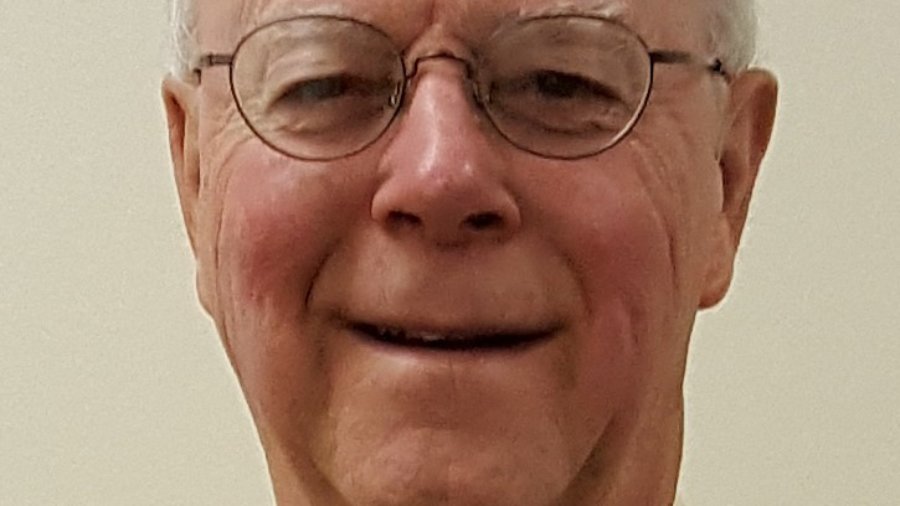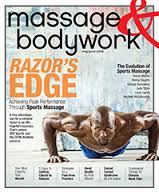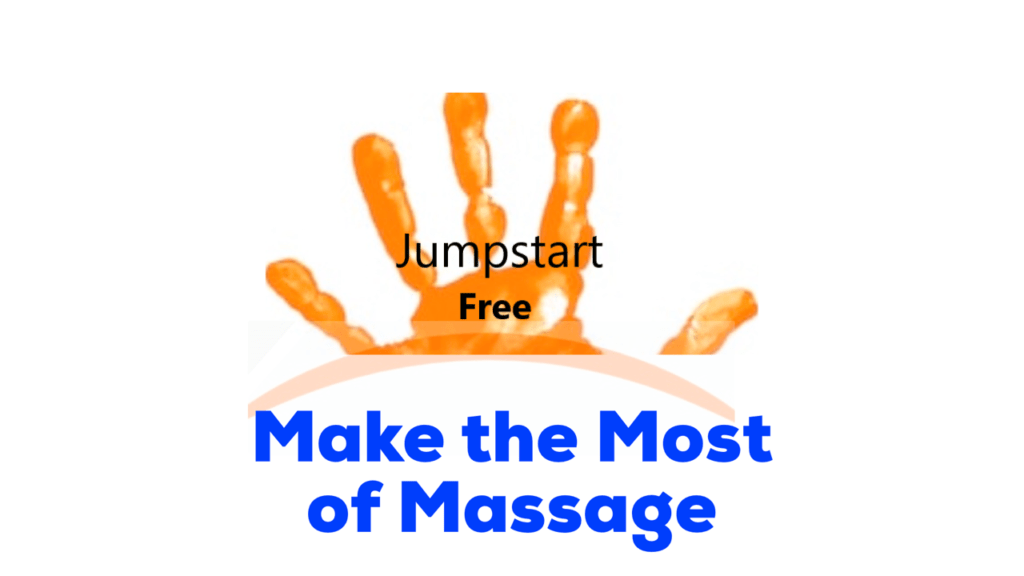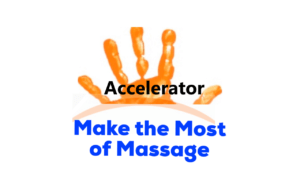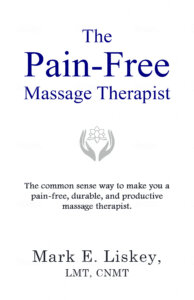This is a story of massage for lower back pain not working (but there’s a lesson).
Casey was crippled because of his lower-back pain. And nothing worked.
In fact, after 4 injections his pain got a lot worse. He went from lying face down on my table to lying on his side to sitting up to not coming in.
The last time he came in, we used a wheelchair to get him in and out of the office.
I was 99% sure that Casey was heading for the knife.
A few weeks after Casey stopped coming in to see me, I met Dr. Charlie Johnson, a PT who specialized in back pain. I thought Charlie might be able to help Casey, and Casey agreed to see him if I came along.
When I went to pick Casey up for the appointment, I expected to see a slumped over, broken man. But what I saw was Casey close to how he used to be pre-back pain.
What the hell?!
Did the nerve compression ease up?
Did the inflammation go down?
Wait…I’ve been down this road before…these questions imply that pain is only a product of tissue damage.
But research shows that pain is not simply a tissue damage event.
Pain is an experience.
I Can Heal You (NOT)
When I opened my neuromuscular massage (NMT) practice in early 2000, I thought I had the playbook for correcting things like lower-back pain.
I’d go through the NMT evaluation protocol, identify the eccentric and concentric muscle issues, add in trigger point therapy, and BAM!–pain get ready to get your butt kicked.
But massage for lower back pain and other issues produced inconsistent results.
I soon became frustrated and started to look for answers elsewhere.
So for the next ten or so years, I studied and wrote about back pain.
At this time, a new view of pain and how it should be treated was just starting to emerge.
The old way for understanding pain was that pain is strictly a matter of tissue damage. The new way for understanding pain was that pain is complex and is influenced by social, emotional and conditional factors.
When I think about Casey’s back-pain story, it makes more sense to view it through the new lens.
Here’s what I mean.
Casey’s Lower-Back Pain
When Casey hurt his back, he stopped working. And as it got worse, his world got smaller, so small that he wouldn’t even leave his house.
By five months, he was basically incapacitated.
But then things started to improve as he approached the 6 month mark.
Interestingly, 6 months marked the time short-term disability would be cut off and Casey would have to go back to work. If he didn’t go back to work, they’d fire him.
I’m not at all suggesting that Casey was faking his back pain. I was there and it was real—to the point where he lost leg functionality.
I’m saying other factors played into Casey’s experience of back pain.
The Other Parts of Back Pain
In his book, Itty Bitty Book About Lower Back Pain, Charlie the PT explains that “pain does not equal damage or injury…it is simply an experience created by the brain when it thinks your body is in danger.”
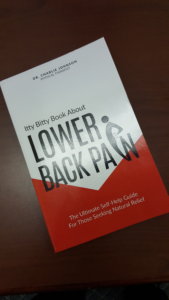
He goes on to say that it takes 3 – 6 months for ligaments, muscles, nerves and discs to heal in your back. After that if pain persists it could be that your sensing system is revved up and you’re brain “is still sensing danger.”
Now, let’s back up to when Casey hurt his back. A physical event happened in his back, like a tear or strain or rupture or impingement or something.
About a month post injury, he was doing better. Then things suddenly got worse. At the time, he was still seeing a personal trainer and my hunch is that the personal trainer was having Casey do something that aggravated his back condition.
Then Casey started injections. Each injection helped for a very short period of time, but then the pain returned and eventually got worse. During this time he had some falls and could’ve re-injured his back.
But eventually, the potential back-pain, perpetuating factors were eliminated–no more falls and he stopped seeing the personal trainer. So he was healing and feeling better, right? Actually, no. The pain now was the worst it had ever been!
Why?
Maybe because there were things revving up his sensing system, like:
Casey HATED his job because his boss stressed him out!
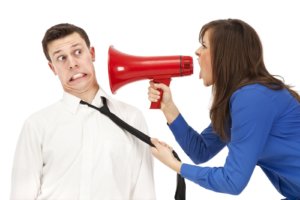
According to the research Charlie sites in his book, if you hate your job, you’re likely to experience more pain than someone who likes her job.
In addition, it’s been shown that memories can impact pain. Casey constantly talked about his boss as being psychotic.
Memory of Psychotic Boss + Thought of Going Back to Work = Stress Hormones Shooting Up.
Okay, but you could argue that Casey’s stress level should’ve gone down because he was away from the hostile work environment while on disability.
True, but Casey also knew he’d be fired if he didn’t return to work after 6 months of disability.
That worried him A LOT. By the way, if you’re sad or worried you’re likely to feel more pain than someone who’s happy and relaxed.
OMG, no wonder the poor man couldn’t sleep! And, yes, bad sleep habits equal more pain.
Can you feel the pain intensifying?
Casey (Massage for Lower Back Pain) Revisited
“Pain is an experience” makes complete sense to me. Casey’s lower-back pain fits this view to a T.
If I could have a do-over, here’s how I’d try to help Casey now.
First, I’d let him know that the injury to his back will heal in 3 to 6 months. This should ease some immediate anxiety regarding his back pain.
Next, I would jump into action once I heard Casey repeating things.
For instance, each time I massaged Casey while he was in back pain, he told me (and I could see) how stressed out he was. But I didn’t appreciate the significance of what stress can do to the experience of pain.
If I had really gotten this, I would’ve pestered Casey endlessly to get counseling or find a professional who could teach him how to meditate.
Lastly, it doesn’t matter how well I listen to a client and recognize a need if I don’t have someone good to refer her to.
With Casey, I learned that my referral list had holes in it.
This became apparent when Casey filled me in about the back doctor he was seeing. I was not impressed. For one, the doctor gave Casey more injections than most other doctors would and he never used imagery when injecting.
But I didn’t have an alternative for Casey to see at the time. If I had known about Charlie, I would have sent Casey to him.
Old Dog, New Trick
Here’s how I’m gonna fix my referral list. I’ll talk to people in the health and wellness industry who I trust. I’ll get their recommendations, then I’ll vet their recommendations. Here’s how I vet.
Also, going forward, this is big, I promise to NOT take stress or any other factor that influences the experience of pain, for granted—ever, ever again.
And, if things are looking bad because the pain won’t go away, I’m going to remember that in 3 to 6 months most back issues have healed.
Maybe there’s something revving up the pain system.
Time to look with a magnifying glass.
P.S. When Casey went back to work, he had a new (and nice) boss:-)

Need more help with your back pain clients?
Check out Common Sense Ways to Treat Sciatica.
And join my email group to get my latest info. Sign up below. It’s free:-)
